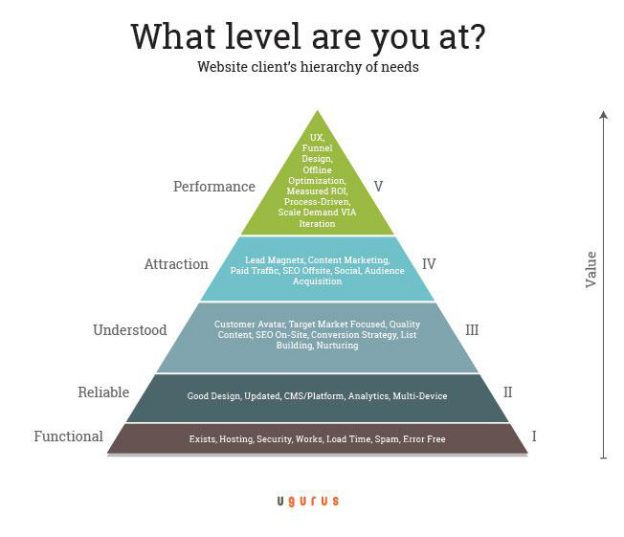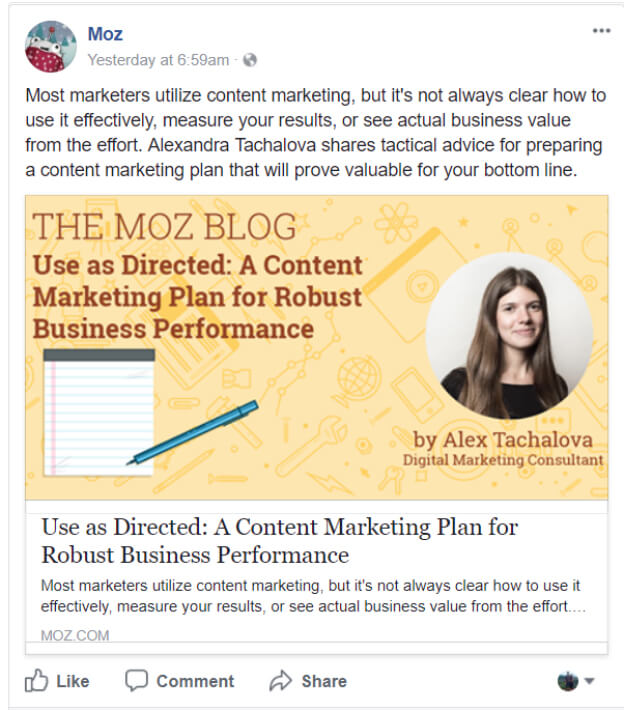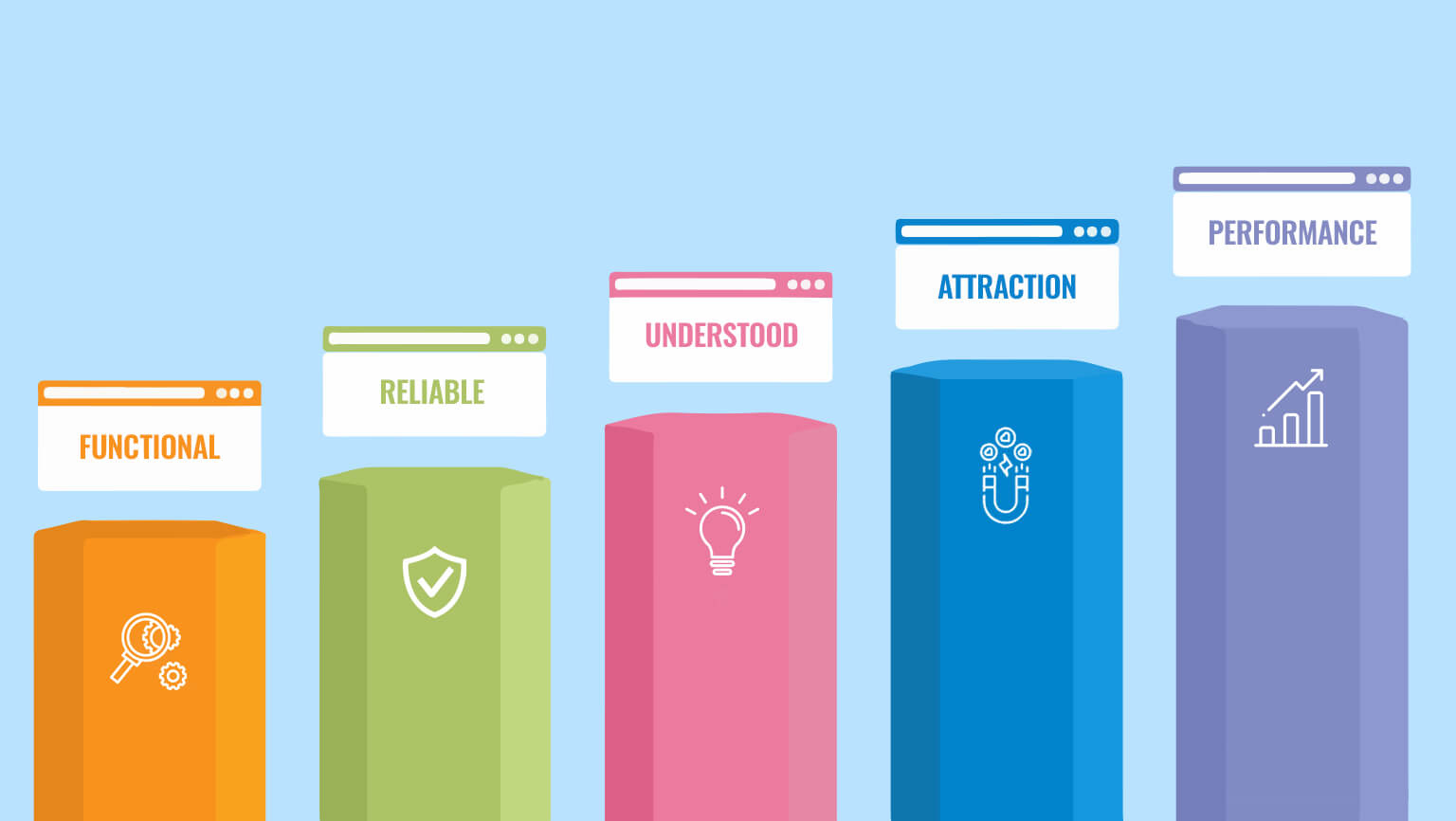There are currently more than 1.3 billion websites on the internet – a number that is growing by the second.
Before launching a business, many owners believe that developing a website is step one. In simple terms, this is true. However, it’s essential first to step back and consider your overall business objectives.
Instead of thinking in terms of just needing a website, they must first come to realize that what they need is customers. A website is merely the means to get them.
Customers are at point A, and point B is when they convert, buy, or take the desired action. If the road between those points is unnecessarily long, uneven, and full of obstacles, customers will have no problem finding a different route to a different destination.
On the other hand, if you create a smooth highway on a scenic route with plenty of amenities, getting to point B is much more desirable.
Just like road trippers, customers have specific needs that must be met to take action – not all of which are equal. On a road trip, there are essential needs like a car, gas, and a paved road. Then, there are lesser needs like air conditioning, music, or a sunroof. The same concept applies to websites. This idea is known as the “Website Hierarchy of Needs.”

When looking at this hierarchy, there are five key measures that are crucial to the success of any website, and your results are much better if you start from the ground up. Let’s discuss.
1. Functional
This measure refers to the basic needs a website visitor has. For a road trip, they need a car that turns on and has working pedals. When looking at a website, the platform needs to work, the landing pages need to load, the site needs to have web hosting, and most importantly, it needs to be secure.
In the grand scheme of things, websites that only meet the basic needs of functionality do not add significant value for the user. This measure is more or less expected and serves as the foundation for a website.
For many companies, this is where their website efforts have ended. After the project first launched, they just forgot about it. Often this means that their website isn’t producing the results that they should expect from the world’s largest marketing platform (the internet!).
2. Reliable
With the basics of functionality met, there are a whole new set of needs that come into play. The car can’t shut down ten miles into the trip. The brakes need to work EVERY time you press the pedal.
Your website needs to perform consistently. Sure, it looks alright, but does it work? Are there outdated plugins? Has it become insecure? Does it only work well on a desktop? Are the code and images optimized for loading quickly? Does it work as well on a mobile device as it does on a desktop computer?
Websites need to possess a certain level of reliability. Not only is it crucial that you maintain this measure; it needs to be blatantly clear that you value it. Keep your website components updated on a regular basis. Prioritize your back-end analytics and keep up with content management.
A reliable website is trustworthy and doesn’t have significant technical inconsistencies. These characteristics need to be present across the board.
3. Understood
Having a website that looks good and functions isn’t enough. Once you’ve got all the functionality and reliability ironed out, customers need an understanding of what your site is all about. They need to understand the meaning behind your efforts, and need to be lead on the journey you want them to take. On a road trip, this is the main reason why people go to a particular destination. People drive to the grocery store for food, the movie theater for entertainment, the gas station for fuel, and so on. This measure should work to answer the “why.”
Success in this regard comes down to how well you understand your target market.
- Who is your ideal customer or client?
- What are their pain points?
- How do they communicate?
- What types of content resonate with them?
Ultimately, this is the unique selling point you provide with your website. It should encourage people to take your desired action, whether it’s signing up for your newsletters, creating a profile, or purchasing a product. This website does an excellent job of immediately spelling it out to visitors:

You will note that in the above example, DistroKid does not focus on themselves. Their content is customer focused. The better you can speak to your visitors’ needs, the better they will understand your offering, and the better your customer sustainability will be.
4. Attraction
Once you have covered the first three measures in the hierarchy of needs, your next task is forming strategies that are designed to drive customer acquisition. Going back to the road trip analogy, this is what gives people specific reasons to visit a destination. Is there a big event going on? Is the scenery extra beautiful around this time of year?
Concerning a website, you need to motivate visitors to visit your platform and create pathways to drive traffic. Your offering needs to match the needs of the customer to attract them to your site. And the page that they land on has to be designed specifically for the purpose that they landed on it for.
At this point, a lot of offsite tactics come into play. These tactics refer to the way you advertise your website, promote through content marketing, use social media, optimize for SEO, nurture leads, etc. With over 1.3 billion sites out there, people need reasons to choose a particular one. Yours needs to stick out from the pack. Moz does a great job of motivating people to check out their website.

Notice they aren’t explicitly promoting their website; they are promoting the value people will get from their website.
When looking at the big picture, your ability to do this and make your website attractive is what turns visitors into customers.
5. Performance
Finally, at the peak of the hierarchy, the technical aspects and acquisition strategies have been established. However, as you surely know, the web is an entity that changes by the hour. Keeping up on site performance is a never-ending task. Even after you work out all the current kinks on your site, you need to commit to a continuous cycle of fine-tuning the formula that makes your website convert visitors into customers.
If people are going camping at a park, you, as the operator, need to make sure those campsites are well kept, the trash is picked up, and the facilities are in excellent condition. Additionally, you should be finding ways to make the park even better so more people come back next season.
For a website, this is where you refine promotional strategies, optimize your offline presence, and make sure the content and user experience are contributing to healthy conversion rates. Keep in mind that web standards change quite a bit as time goes on. That being said, it’s best to adopt the mindset that nothing is permanent. This cycle of fine-tuning should include frequent AB testing, monitoring trends in user preference, funnel refinement, analysis of scanning patterns, and more. Take Amazon for example. The experts behind the scenes are constantly conducting tests to find new ways of adapting to users. Here is what the homepage looked like in 2011:

Here’s what it looks like now:

You’ll notice that the site in 2011 had a much larger focus on promoting general deals, whereas today’s layout is all about personalized recommendations. Studies have found that this type of tailored content can increase conversion rates by nearly 70%. Over the years, Amazon clearly took this hint in fine-tuning their interface and conversion funnels.
At this point, you are probably making calculations to justify your return on investment. As crucial as measures one through four are, this one holds them all together and ensures your website sees ongoing success.
Conclusion
Just like all walks of life, looks only get you so far. Websites are no exception.
These days, a website serves as the face of a business. The way it functions, draws people in, maintains their interest, and encourages them to take action says a lot about you and your brand. If you want your website to stick around for the long haul, AND generate customers and sales for your business or clients and donations for your organization, make sure these five crucial measures are present in your game plan.
Jack Shepler is a Marketing and Search Engine Optimization expert. He founded Ayokay, award-winning marketing, and web design firm in Indianapolis, Indiana that has built brands, increased sales for businesses, and helped nonprofit organizations fulfill their missions since 2011. He uses his decades of experience to educate through the Ayokay blog and through public speaking. You can follow him on LinkedIn.







